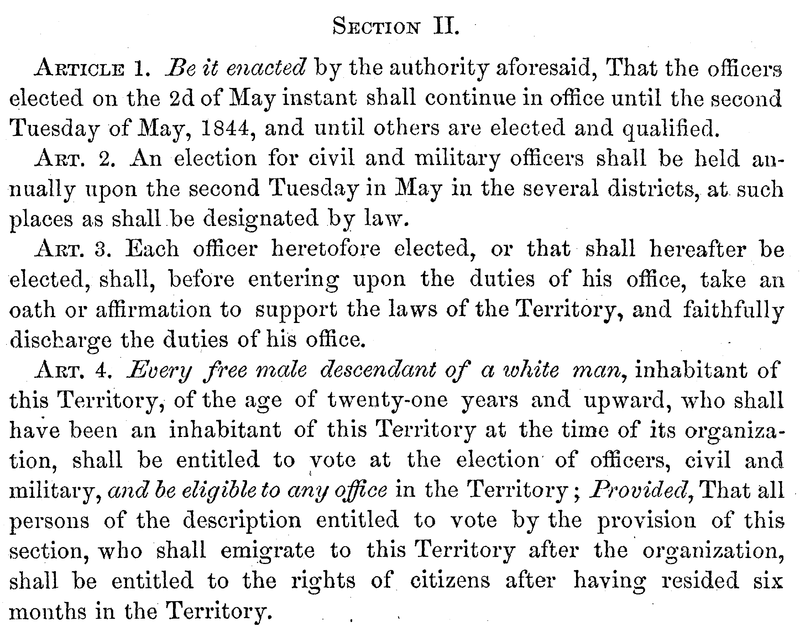
The Great Migration of 1843 was the first significant group of emigrants to head west. That year between 700 and 1,000 emigrants left for Oregon, mostly families seeking free land. In 1843, it was still uncertain whether the United States or Great Britain would govern the Oregon Territory, but it was clear the land was good for farming.
Those settlers of 1843 formed a provisional government in Oregon and passed the first Organic Laws, which authorized male pioneers to claim up to 640 acres of free land. This policy continued until Congress passed the Donation Land Claim Act of 1850. That federal law continued to grant free land to emigrants in the West, though the terms changed somewhat.
Between 1840 and 1848, a total of about 11,500 emigrants traveled to Oregon, while only 2,700 went to California. As an example of how the settlers preferred Oregon to California, in 1846, there were about 2,500 emigrants to the west, of whom 1,500 to 1,700 went to Oregon, while only 800 to 1,000 went to California. That year, Great Britain ceded its rights to the U.S. in the Oregon Treaty of 1846. Meanwhile, the Mexican-American War began, also in 1846.
In 1847 and 1848, Mormons headed to Salt Lake added to the travelers to Oregon and California, but even so migration to the west remained small. In fact, the emigration of 1848 was less that in many earlier years.

As I’ve described before, James Marshall found gold at Sutter’s Mill in January 1848. Coincidentally, the Treaty of Hidalgo was signed with Mexico on February 2, 1848. California was now a part of the United States, and gold provided an immediate impetus for Americans to head to California.
Thus, once news of the discovery of gold in California reached the East Coast, the pattern of emigration to the West changed forever. The preferred location shifted immediately away from Oregon and toward California. Approximately 80,000 people flocked to California during 1849. As I’ve described in earlier posts, they came overland on the California Trail and by ship around Cape Horn or through the Panama shortcut.
Over 35,000 people, almost all men, took the overland route to California—the famous Forty-Niners. The majority of them descended on California as voraciously as a wave of locusts. They left the East in early spring, came through the border towns in Missouri and Iowa in April and May, then all of them rushed west to beat the winter snows and stake their claims.
As we head into summer in 2015, let’s remember the Forty-Niners, those intrepid fortune seekers of 1849, who flooded the plains 162 years ago.
Would you have headed to Oregon or California in the spring of 1849?




I enjoyed this post, Theresa. I might have jumped on the bandwagon. 🙂
But some women must have gone, yes? Maybe not directly for the gold, but for other reasons?
Luanne, yes, some women went. For another post specifically on the role of women, see https://mthupp.wordpress.com/2015/04/22/roles-of-women-during-the-california-gold-rush/
Thanks. Theresa
Imagine having the guts to be one of those women going out there, looking for a husband.